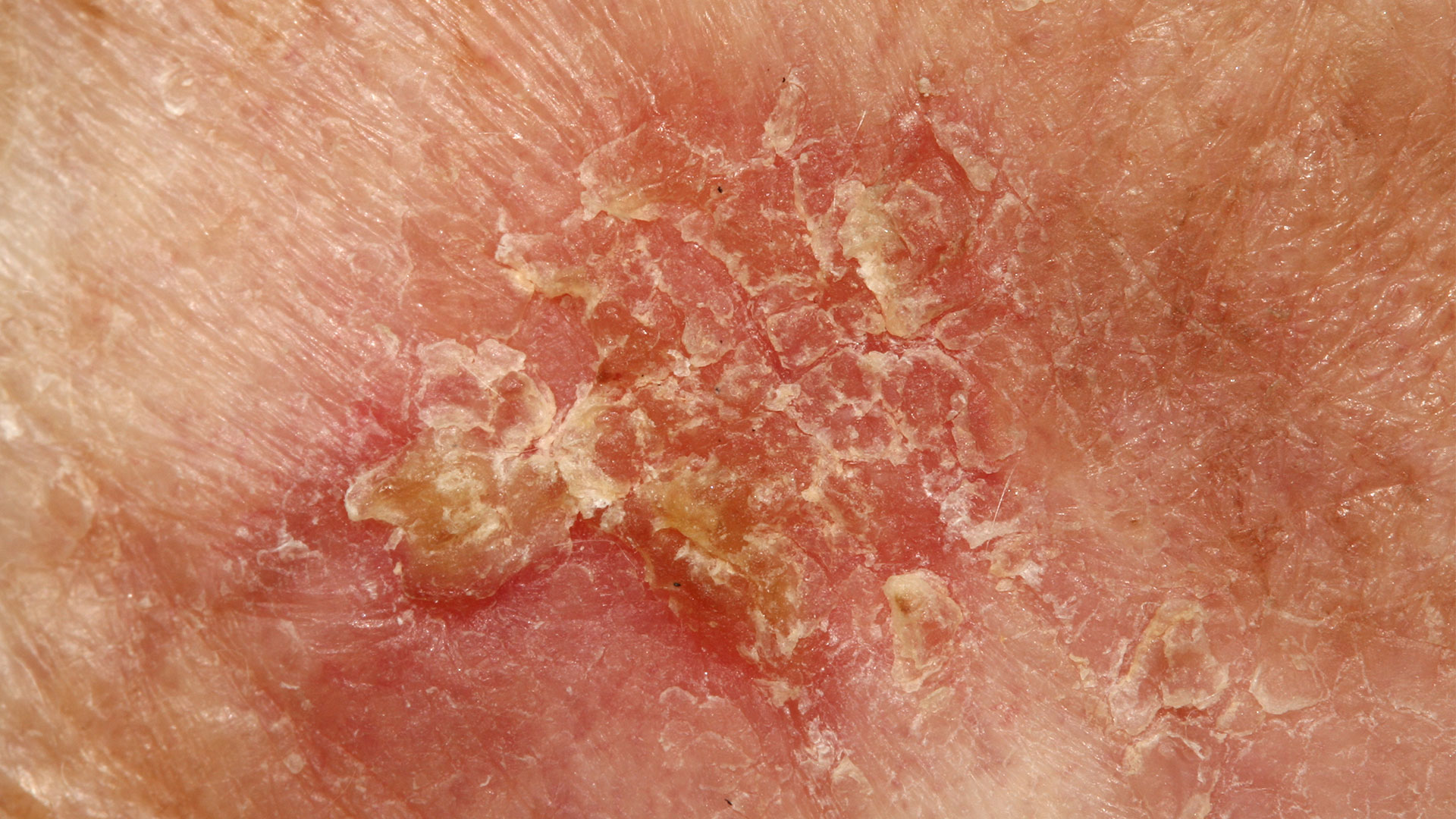Squamous Cell Skin Cancer
SkinCare in Wellesley, MA
Squamous cell skin cancer can be scary, but the condition is very treatable, especially when addressed early. Dr. Rashel Goodkin is an expert in dermatology and provides squamous cell carcinoma treatment for patients near Boston.
Quick Links
What is Squamous Cell Skin Cancer?
Squamous cell skin cancer, or squamous cell carcinoma, is the second most common type of skin cancer. It involves uncontrolled, abnormal, and accelerated growth of the squamous cells, which are a type of skin cell found near the surface of the skin. Squamous cell carcinoma is generally caused by damage to the skin cells due to ultraviolet (UV) radiation exposure or other environmental damage.
Symptoms of Squamous Cell Carcinoma
Squamous cell skin cancer may look like a scaly red patch, wart-like growth, open sore, or a raised patch with a depression or dimple in the center. In some cases, a squamous cell skin cancer lesion may crust, itch, or bleed. Squamous cell carcinoma is most likely to occur in an area of the body that is frequently exposed to the sun. However, it’s possible for the cancer to develop anywhere in the body, so regular and thorough self-examinations of the skin are important. If you notice a lesion that appears similar to squamous cell skin cancer or does not quickly heal, schedule an appointment with Dr. Goodkin so she may evaluate your symptoms and perform a biopsy if necessary.
Squamous Cell Skin Cancer Treatment
Squamous cell skin cancer is typically curable through early treatment. These treatments are simple and performed on an outpatient basis, but the exact method will vary depending on the size, depth, or location of the skin cancer and your general health.
Before treatment, Dr. Goodkin will perform a biopsy, which involves removing tissue from the lesion to examine it in a laboratory and make a diagnosis. In some cases, this biopsy excision will remove the entirety of the cancer cells, and further treatment is not necessary.
Other patients may be treated with a simple topical medication. This method is sometimes chosen when the squamous cell carcinoma does not reach deep into the skin. The prescription cream can be applied at home for about six weeks and the treated area is then checked in the dermatologist’s office several weeks later to make sure the skin cancer is resolved.
For other patients, treatment involves removing the squamous cell skin cancer through a minor surgery. This can be achieved through curettage and electrodesiccation (C and E), in which a curette is used to carefully scrape away cells before searing the area with an electric needle. This method is often chosen for superficial squamous cell carcinomas which don’t reach very far into the skin. Other methods of removing squamous cell skin cancer include cryotherapy or laser therapy.
Deeper, larger, or more advanced squamous cell skin cancer can be treated using a simple excision, in which Dr. Goodkin will carefully cut out the cancerous tissue, or Mohs surgery. Mohs surgery involves removing skin cancer cells layer-by-layer, allowing the doctor to be sure that the skin cancer is completely removed without much damage to surrounding skin.
It is important to treat squamous cell skin carcinoma as it can destroy and invade the tissues around it and can spread to other organs if not treated. If treated in time, the squamous cell skin carcinoma will usually not be a danger in the future. It is very important for patients who had squamous cell carcinoma to have regular skin cancer screenings with their dermatologist as well as to use good sun protection.
Schedule an Appointment
If you suspect you may have squamous cell carcinoma or another type of skin cancer, schedule an appointment with Dr. Rashel Goodkin. Call our office at 781.227.7977 or request your appointment through our online form.
